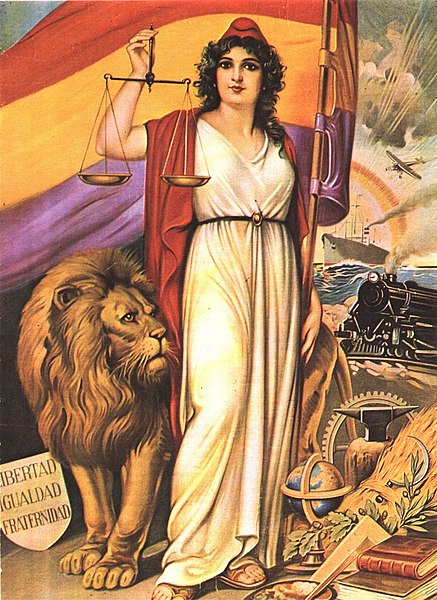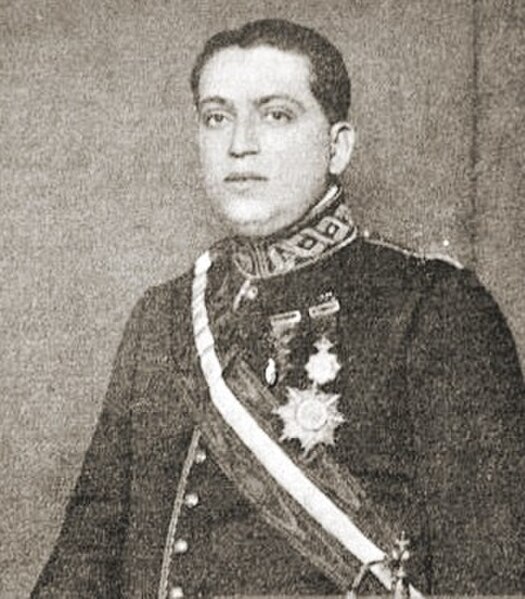José Ortega y Gasset was a Spanish philosopher and essayist. He worked during the first half of the 20th century while Spain oscillated between monarchy, republicanism, and dictatorship. His philosophy has been characterized as a "philosophy of life" that "comprised a long-hidden beginning in a pragmatist metaphysics inspired by William James, and with a general method from a realist phenomenology imitating Edmund Husserl, which served both his proto-existentialism and his realist historicism, which has been compared to both Wilhelm Dilthey and Benedetto Croce."
Ortega y Gasset in 1948
The Spanish Republic, commonly known as the Second Spanish Republic, was the form of government in Spain from 1931 to 1939. The Republic was proclaimed on 14 April 1931 after the deposition of King Alfonso XIII. It was dissolved on 1 April 1939 after surrendering in the Spanish Civil War to the Nationalists led by General Francisco Franco.
Allegory of the Spanish Republic, displaying republican symbolism such as the Phrygian cap and the motto Libertad, Igualdad, Fraternidad
Workers arrested by the Guardia Civil and Guardia de Asalto during the Asturian miners' strike of 1934
Column of Guardias Civiles during the 1934 Asturian Revolution, Brañosera
Calvo Sotelo dressed in the uniform of the Cuerpo de Abogados del Estado.





